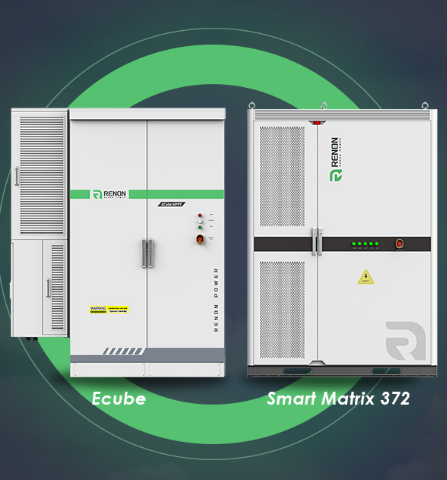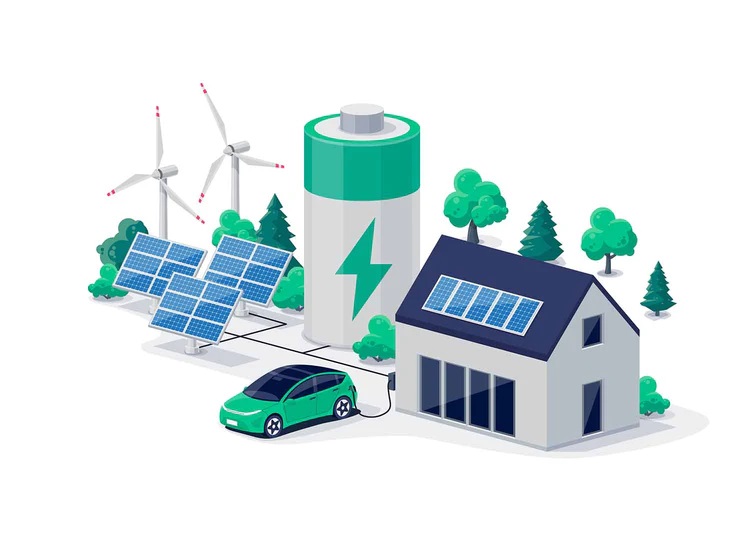In a world where energy demands are soaring and environmental concerns are paramount, the concept of microgrids has emerged as a transformative solution. Microgrids represent a paradigm shift in the way we generate, distribute, and consume energy. Unlike conventional power grids, microgrids are localized energy systems that can operate independently or in conjunction with the main grid. This article explores the intricate world of microgrids, delving into their components, architecture, advantages, challenges, and future prospects.

A microgrid is a complex network comprising several key components that work in harmony to ensure a stable and sustainable energy supply.
Microgrids integrate diverse power sources, including renewable energy such as solar, wind, hydro, and biomass, along with conventional fossil fuels like natural gas and diesel. This mix allows microgrids to balance energy generation according to demand and availability of resources.
Energy storage is a vital component of microgrid architecture. Batteries, flywheels, and supercapacitors store excess energy generated during peak production periods. These storage systems discharge energy during high-demand phases, ensuring a continuous supply, even when primary sources are intermittent.
Inverters and converters are employed to convert the direct current (DC) generated by solar panels and batteries into alternating current (AC) used in most electrical appliances. These systems enable seamless integration and distribution of energy within the microgrid.
Microgrids rely on sophisticated control systems, including microcontrollers and SCADA (Supervisory Control and Data Acquisition) systems. These technologies facilitate real-time monitoring, automation, and optimization of energy flow, ensuring efficient operation and reliability.
Microgrids, the epitome of decentralized energy systems, are meticulously designed networks incorporating advanced technologies to ensure seamless energy generation, distribution, and consumption. Understanding the intricate architecture of microgrids illuminates the path toward energy sustainability and resilience.
The hallmark of microgrid architecture is its ability to operate autonomously during grid failures, a feature known as islanding capability. Microgrids employ smart switches and controllers that detect grid disturbances instantly. When a disruption is detected, the microgrid disconnects from the main grid, ensuring that critical facilities like hospitals and emergency response centers continue to receive uninterrupted power. This automatic islanding capability enhances the reliability and resilience of microgrids, making them invaluable in situations where grid stability is compromised.
Microgrid architecture incorporates advanced algorithms for generation management, ensuring efficient utilization of diverse energy sources. Load balancing algorithms distribute the energy generated by various sources based on real-time demand patterns. These algorithms optimize energy distribution, preventing overloads during peak demand while ensuring that no source remains underutilized. Dynamic optimization ensures that the microgrid adapts swiftly to changing energy needs, maintaining a stable supply even during fluctuations.
Energy storage systems are pivotal components of microgrid architecture. Batteries, flywheels, and supercapacitors store excess energy generated during periods of high production. These storage devices discharge energy during peak demand, stabilizing the microgrid and preventing power outages. The integration of energy storage ensures a constant power supply, even when primary sources, such as solar or wind, are intermittent. Intelligent control algorithms govern the charging and discharging cycles, maximizing the lifespan of storage systems and optimizing energy availability.
Microgrids employ sophisticated control strategies to manage energy flow efficiently. Decentralized control allows individual components, such as solar panels and batteries, to make autonomous decisions based on local conditions. Centralized control involves a central management system overseeing the entire microgrid, enabling coordinated actions and optimal resource utilization. Hierarchical control combines elements of both decentralized and centralized approaches, allowing for flexibility and adaptability. These control strategies ensure that energy production and distribution are streamlined, minimizing wastage and maximizing efficiency.
Microgrids are designed with grid-interactive features to enable seamless transitions between grid-tied and islanded modes. Synchronization protocols ensure that when the main grid is restored after a failure, the microgrid can reconnect seamlessly without causing disruptions. Grid-interactive features also enable the exchange of excess energy between microgrids, enhancing overall system stability. These features are critical in areas where multiple microgrids are interconnected, enabling the efficient sharing of resources and optimizing energy usage.
In the digital age, cybersecurity is paramount in microgrid architecture. Advanced encryption techniques, intrusion detection systems, and secure communication protocols safeguard microgrid components from cyber threats. Robust cybersecurity measures prevent unauthorized access, ensuring the integrity and reliability of the microgrid. Continuous monitoring and regular updates to security protocols are essential to stay ahead of evolving cyber threats.
Understanding the intricacies of microgrid architecture is essential in harnessing the full potential of these innovative energy systems. By embracing the principles of islanding capability, generation management, energy storage integration, intelligent control strategies, grid-interactive features, and robust cybersecurity, microgrids stand as beacons of energy sustainability and resilience, paving the way for a future where communities are empowered, and energy access is reliable and uninterrupted.
Microgrids offer several advantages, making them attractive solutions in various contexts. They enhance reliability and resilience, ensuring a stable power supply even in adverse conditions. Additionally, microgrids contribute to energy efficiency and cost savings by optimizing energy use and reducing wastage. Furthermore, by integrating renewable sources, microgrids help reduce greenhouse gas emissions, mitigating the impact of climate change.

Microgrids find applications in diverse sectors, including remote and off-grid communities, industrial complexes, and military bases. In remote areas with limited access to the main grid, microgrids provide a lifeline, powering homes, schools, and healthcare facilities. In industrial settings, microgrids optimize energy usage, leading to significant cost reductions. Military bases and emergency response centers rely on microgrids for their resilience, ensuring operational continuity during grid failures.
Microgrid implementation faces several challenges, including technological integration, regulatory hurdles, and cybersecurity concerns. Integrating diverse components and ensuring their compatibility is a complex task. Regulatory frameworks often lag behind technological advancements, posing obstacles to microgrid deployment. Additionally, microgrids are vulnerable to cyber threats, requiring robust security measures.
To address these challenges, advanced energy management systems are employed, ensuring seamless integration and compatibility of components. Standardization and interoperability protocols are crucial, enabling smooth communication between different devices within the microgrid. Public-private partnerships play a vital role in shaping regulatory policies and fostering innovation. Robust cybersecurity measures, including encryption and intrusion detection systems, safeguard microgrids against cyber threats.
Case Study 1:
Location: Rural Village in Africa
Description: A solar-powered microgrid was implemented, providing electricity to homes, schools, and healthcare centers. The project significantly improved living standards, enhanced education, and facilitated healthcare services.
Case Study 2:
Location: Industrial Complex in Europe
Description: An integrated microgrid system was deployed, optimizing energy usage in the industrial facility. Load balancing algorithms and energy storage integration led to a 30% reduction in energy costs, making the complex more competitive.
Case Study 3:
Location: Military Base in the United States
Description: A resilient microgrid was installed, ensuring uninterrupted power supply to critical military operations. The microgrid's islanding capability proved invaluable during grid failures, maintaining the base's operational readiness.
Integration of AI and Machine Learning:
AI algorithms analyze data from various sources, predicting energy demand patterns and optimizing microgrid operations. Machine learning techniques enhance decision-making, improving efficiency and reducing energy wastage.
Blockchain Technology:
Blockchain technology enhances the security and transparency of transactions within microgrids. Smart contracts enable automated, tamper-proof transactions, ensuring fair compensation for energy producers and consumers.
Advancements in Energy Storage Technologies:
Ongoing research in energy storage technologies, such as solid-state batteries and flow batteries, promises higher energy density, faster charging, and longer lifespan. These advancements enhance the reliability and efficiency of microgrid energy storage systems.
Expansion of Microgrid Networks:
Microgrid networks are expected to expand, connecting multiple microgrids into larger, interconnected systems. These networks enable the sharing of excess energy, enhancing overall efficiency and resilience.
In conclusion, microgrids represent a revolutionary approach to energy generation and distribution. Their robust architecture, encompassing diverse components and advanced control systems, ensures a stable and sustainable energy supply. The advantages of microgrids, including enhanced reliability, energy efficiency, and reduced environmental impact, make them indispensable in the modern energy landscape. While challenges exist, innovative solutions and collaborations are driving the evolution of microgrid technology.

扫码关注
We use cookies to understand how our audience uses our site.
Renon Power websites use cookies to deliver and improve the website experience. See our cookie policy for further details on how we use cookies. Privacy Policy